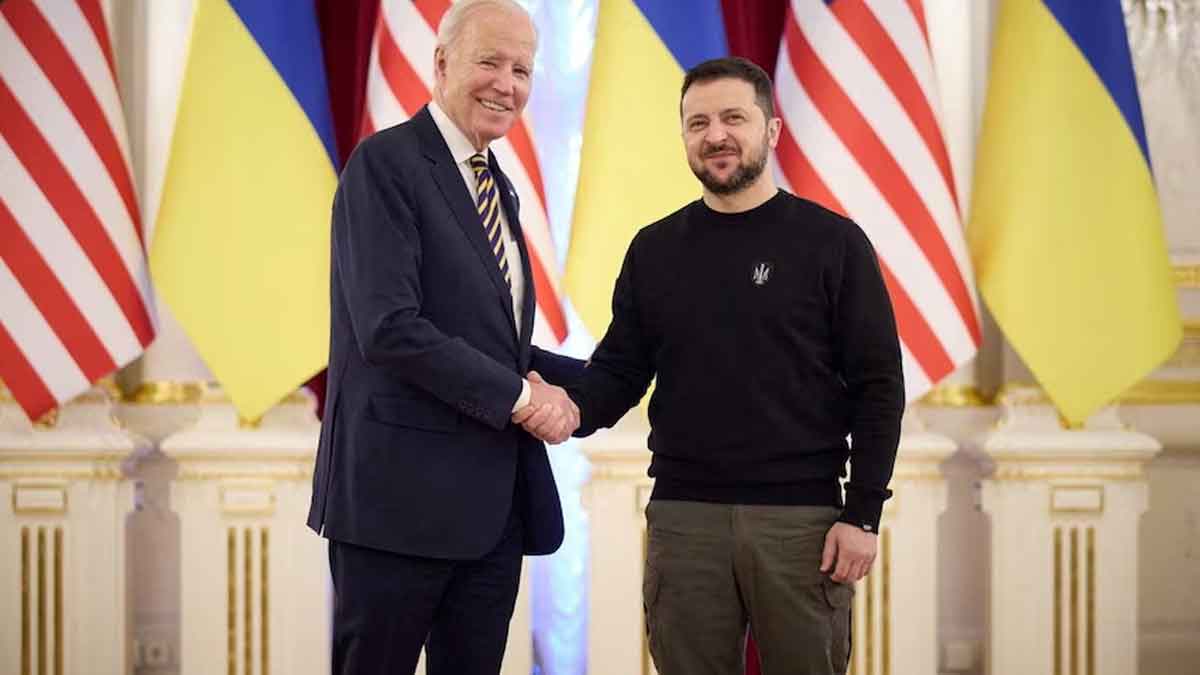
It is the first time US President Joe Biden has visited Ukraine since Russia invaded in February 2022.(Reuters/Ukrainian Presidential Press Service)
US President Joe Biden has made an unannounced visit to the Ukrainian capital Kyiv, days before the first anniversary of Russia's full-scale invasion of Ukraine in 2022.
Air raid sirens blared across the Ukrainian capital as Mr Biden visited Kyiv but there were no reports of Russian missile or air strikes.
He delivered remarks and met with President Volodymyr Zelenskyy at Mariinskyi Palace to announce an additional half billion dollars in US assistance and to reassure Ukraine of American and allied support as the conflict continues.
"One year later, Kyiv stands. And Ukraine stands. Democracy stands," Mr Biden said.
"[Putin] is counting on us not sticking together. He was counting on the inability to keep NATO united. He was counting on us not to be able to bring in others to the side of Ukraine.
"He thought he could outlast us. I don't think he's thinking that right now. He's just been plain wrong."
Mr Biden said Washington would provide Kyiv with a new military aid package worth $US500 million ($A724 million) that would be announced on Tuesday.
He said it would include more ammunition for High Mobility Artillery Rocket Systems (HIMARS).
The US would also be announcing additional sanctions this week, Mr Biden said, against the Russian elite and companies trying to evade sanctions to "back the Russian war machine".
In a speech, Mr Biden commended Ukraine's courage during the war and noted that he had visited Kyiv six times when he had earlier served as vice-president.
"I knew I would be back," he said.
The air raid sirens wailed while both presidents were inside the St Michael's Golden-Domed Cathedral on a square in central Kyiv where burnt-out Russian tanks have been placed.
"Your visit is an extremely important sign of support for all Ukrainians," Mr Zelenskyy said.
"We hope this year, 2023, will become the year of victory against this unprovoked and criminal Russian war against Ukraine."
In a statement, Ukraine's Foreign Minister Dmytro Kuleba said both Mr Biden and Mr Zelenskyy were pleased with the outcome of their talks.
Ukraine is preparing for what it expects to be a major new Russian offensive that some military analysts say is already underway.
Mr Biden's trip fell on the day that Ukraine marks the deaths of more than 100 people — now known as the Heavenly Hundred — at anti-government protests that eventually toppled a Moscow-backed president in 2014.
It also comes just a day before Russian President Vladimir Putin was due to make a major address, expected to set out his country's aims for the second year of the invasion he launched on February 24 last year.The anniversary has taken on more than symbolic significance, becoming what the West views as motivation for the war's deadliest phase as Moscow hurls thousands of conscripts and mercenaries into a winter offensive. Source: https://www.fijivillage.com/


